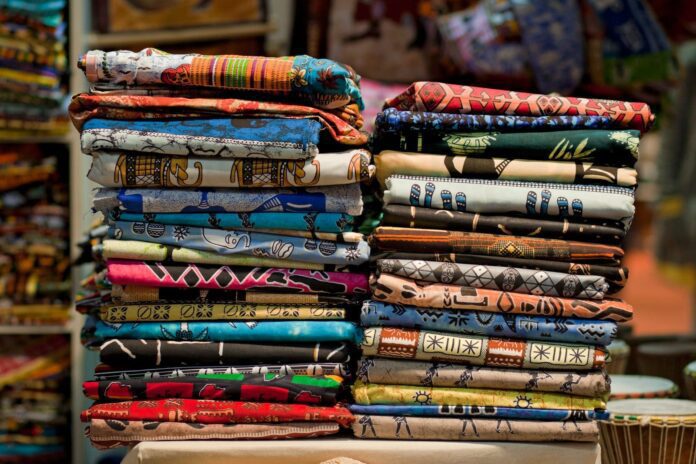Exploring the Origin and Meaning of Wax Capulana Fabrics
Wax Capulana fabrics, known for their vibrant colors and striking patterns, have a rich and deep history dating back to African culture, in particular the East African region. These fabrics are not just garments; They are symbols of identity, cultural expression and connection with ancestral roots. In this article, we will delve into the fascinating journey of Wax Capulana fabrics, exploring their origins, meanings and cultural influences.
The Origins of Wax Capulana Fabrics:
Wax Capulana fabrics have their roots in the wax dyeing technique, which was introduced to Africa in the 19th century by Dutch traders. Initially, these fabrics were destined for the Asian market, but were soon adopted by African communities, who incorporated them into their traditional and everyday clothing. The name “Capulana” derives from the local language, being used in several African regions to refer to these fabrics.
Colors and Patterns with Deep Meanings:
One of the distinctive characteristics of Wax Capulana fabrics is the variety of colors and patterns they present. Each color and pattern has a unique cultural meaning, conveying messages about social status, age, important life events, and even affiliation with specific ethnic groups. Patterns often tell stories, celebrate rituals or express spiritual beliefs, making Wax Capulana fabrics a rich and complex form of visual language.
Cultural Expression and Identity:
Wax Capulana fabrics are much more than simply textile materials; they are an intrinsic part of the cultural expression and identity of African communities. They play a key role in ceremonies, festivals and special occasions, helping to preserve and pass down traditions from generation to generation. Furthermore, these fabrics are often used to tell stories about a people's history, beliefs and values.
Influence on Contemporary Fashion:
Over time, Wax Capulana fabrics have transcended their cultural origins and have been adopted by fashion designers around the world. They have found their way to international catwalks, where they are appreciated for their rich cultural heritage and vibrant style. The fusion between traditional and contemporary has been a striking feature of current fashion, and Wax Capulana fabrics play a crucial role in this evolution.
Preserving Tradition and Innovation:
As global society continues to transform, preserving tradition is critical. Wax Capulana fabrics face the challenge of maintaining their cultural authenticity while adapting to modern changes. Designers often find creative ways to incorporate these fabrics into contemporary clothing, ensuring the heritage and meaning behind them are preserved.
Capulana Beyond Fashion:
Capulana's influence is not just limited to fashion. It extends to various areas of life in African communities. In addition to clothing, fabrics are used as decoration in homes, at wedding ceremonies, births and funerals. They are symbols of respect, love and solidarity. Capulana is also a source of income for many African women who transform it into clothing and crafts to sell in local markets and beyond.
The Cultural and Historical Dimension:
The history of Wax Capulana fabrics is also closely linked to the history of Africa. They were silent witnesses to cultural movements, historical moments and social changes. In colonial times, they became a way to assert African cultural identity and resist foreign domination. Through their patterns and colors, Wax Capulana fabrics tell stories of resilience, resistance and celebration of culture.
Conclusion:
Wax Capulana fabrics are much more than just textile materials; they are a window into the rich cultural tapestry of East Africa and a form of artistic expression and identity. Their vibrant colors, meaningful patterns, and deep history make them a vital part of the life and history of the communities that use them. As the world of fashion continues to evolve, the influence and relevance of Wax Capulana fabrics persist, reminding us of the beauty and richness of African cultural traditions.

